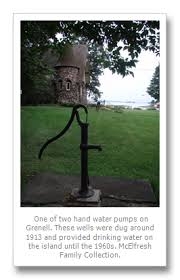Interesting Facts About Thousand Islands

Interesting Facts about Thousand islands
The beauty of the islands rise with its shimmering waters, richly wooded green trees, a variety of castles, midday sun and evening shadows greeted our cruise, especially in the commencement of my journey experienced me a picture fraught with full of interest and pleasure.
The St. Lawrence River has for centuries been history for its trade and recreation. The Thousand Islands region has connected both Canada and U.S.A and these islands became a popular vacation retreat for famous and rich, and those who purchased these private islands shaped them with distinctive architecture and wealth. Many industrialists and business magnets attracted the media, garnered global flame and led to a tourism boom.The St. Lawrence River links the Great Lakes and the Atlantic Ocean, and this seaway became a passage for international trade and an attractive tourist spot.
The Thousand Islands are treated as a vacation paradise and its history is engrossing and informative.The main purpose of this article is to outline the water purification system in these islands. It is a review for which I received the information from the guide when I visited this place. In my trip, from the tourist guide, I heard about the story of ‘Harry Chalk and his cup of water’. Water pollution situation which is a major problem attracted me and made me curious to listen to the guide.
Harry Chalk, a captain for a ferry whose duty is to transport summer residents to their island cottages and along with the residents he has to carry drinking water for the island people. Altogether there are 1864 islands and for all of them, there are only two hand pumps to supply drinking water. So it is the duty of the people on islands is to save water and preserve water and improve water sources for future use. In the year 1912, an association newly formed on Grenell Island to Save the River and also to improve the sanitary facilities in these Thousand Islands. They started ‘Save the River’ program in the year 1978 and as an initial step they started to check the septic system on the islands and stopped dumping the waste into the river. The owners on the smaller islands without having any space or soil on the islands shifted to composting toilets or electric toilets.
Finally, in the year 1983 after lots of research, they started purifying the water with an ultraviolet light system that is one procedure and on the other hand in their research they found that there are plenty of mussels in the River so finally they started to purify the whole river water with mussels. Now the river water is 92% pure and with the plenty of mussels in the water, they are able to purify the whole river water within 72 hours. Is it not awesome?
My curiosity increased and increased and finally traced out about the natural water purification system with mussels. Natural Water Purification With Mussels
• Water that is purified by the mussels have benefits, as they feed on the algae they remove all the unnecessary impurities and clean water and continue to supply oxygen in a natural way.
• The freshwater mussels purify the water in a friendly way as they are fed on microalgae and the mussels suck water in and out where the micro-algae is filtered out.
• Depending on the size and other factors, on an average, each mussel filters 50 to 300 liters of water every day.
• Sea mussels prefer to live on flat bottom slopes instead of the mud bottoms.
• It is difficult for the mussels to survive in much-polluted water where they are being strangled by hypoxia.
• Mussels need fish to reproduce.
• Mussels can be used for sewage treatment as they feed on plankton and algae which filters water.
• Mussels can be used to purify the water, they can be used as a human food and animal feed or it can be used in biogas also.Now it is time for all of us to think about the natural purification of water which is less expensive and more beneficial.
My day in thousand islands made me learn few interesting facts which I want to share it with all my friends.
(picture source-visit1000islands.com)


B.Madhurima
Videos
Videos
Videos
@ignitingmindsmagazine
@IgnitingMindsin
Top Stories
- Dedicated to the Sparrows, Forests and Water
- The United Nations Decade of Ecosystem Restoration
- How technology in agribusiness affects climate change, a concrete solution.
- Restless Youth Seek Climate Action
- Telangana Jagruthi International Youth Leadership Conference 18,19,20th January 2019
- Sports for Climate Action Framework launched at COP24
- COP24: One Week of Misgivings
Videos
Businesses
- Can Home Remedies Increase Your Height.
- Success Comes When We Make Innovation a Habit
- Do You Want to Be a Green Entrepreneur?
- Igniting Minds Official Web Portal Launched in New Delhi.
- Strive To Drive The Life
- Do Mobile Apps Facilitate Small Businessmen?
- Water Conservation, Preservation and Restoration. A Global Engineering Challenge.